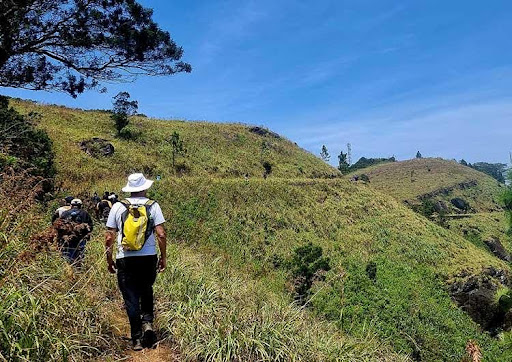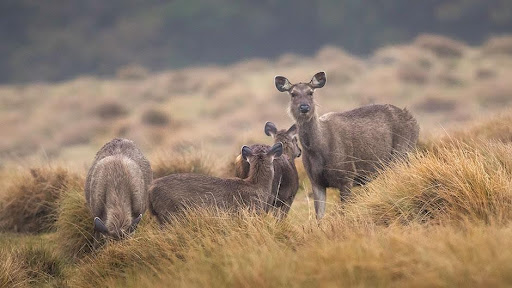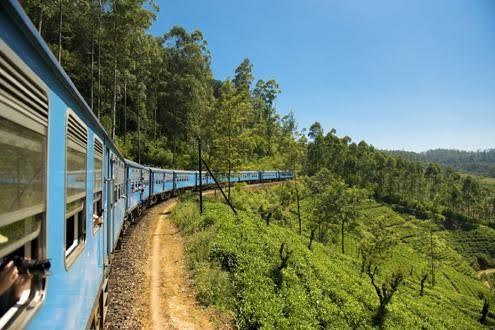
Loading...

Loading...
National Geographic has announced its picks for the BEST OF THE WORLD 2024, the brand’s annual guide to the most exciting, meaningful, and one-of-a-kind travel experiences for the year 2024. The Pekoe Trail has been selected in the “Top 20 Travel Experiences” category, highlighting the uniqueness of this trail. The Pekoe Trail has been popular among tourists as well as locals, as a result of these nominations.

Hiking the Pekoe Trail
Preparing for a backpacking trip is crucial for a safe and enjoyable experience. When you're out in nature, away from modern conveniences, readiness/ being prepared is the key. Proper planning helps you anticipate potential hazards like tough terrain, bad weather, or encounters with wildlife. It also ensures you have the necessary gear, such as navigation tools, first aid kits, food, water, and emergency shelter.
By researching hiking trails, checking conditions, and packing accordingly, you can minimize risks and build/boost your confidence. Being well prepared means you can focus on enjoying the great outdoors without worrying about unexpected problems.
Given below are some things you need to know before planning your Pekoe Trail hike.
1. Accessing your current physical fitness
Before you decide on which trail to choose, it is crucial to make an honest evaluation of your current fitness level. This will ensure that your fitness level matches the level of the difficulty of the trail you choose. Accessing your fitness helps you to get the maximum experience during the hike without difficulties.
2. Deciding on the trail
There are plenty of trails to choose from on the Pekoe Trail. Depending on your current level of experience, you can venture on hikes according to your preferences and fitness level. It would be a really nice experience if you combine the hikes around the Pekoe Trail and come up with exciting multi-day or single-day hikes. If you wish to explore hidden gems in the area, taking a detour of the trail will be much more interesting.
3. Checking the weather seasons and getting familiar with the trail
After you decide on the trail and the location, check the weather conditions and the ideal season to travel.
Before embarking on a trail, it's essential to gather information as much as you can. Reach out to fellow hikers who've tackled the trail before for valuable insights. You can also scour the internet and social media platforms for firsthand accounts of others' experiences. By doing your research, you'll be better prepared and informed about what to expect on the trail.

4. Preparing essential gear and supplies
Check out the natural water sources on your chosen trail which have been marked as safe to drink.
5. Navigation and GPS
Make sure to download maps offline or utilize GPS (Global Positioning System) hiking apps that work without an internet connection before starting your hike. The Pekoe Trail's official navigation app is highly recommended for this journey, offering precise guidance and useful insights about the trail and its surroundings. Take some time to get to know the app's features beforehand to ensure seamless navigation during your hike.
There are campsites available on some stages of the Pekoe trail. Below are some of the sites close to the trail. You can get to these campsites without taking a considerable detour from the trek.
As you journey along the Pekoe Trail in Sri Lanka's central highlands, you'll not only experience the region's natural beauty but also have the chance to connect with the local communities you encounter. Many of these communities have roots in South India, brought to the area generations ago as laborers during British rule. They live alongside Sinhala communities, creating a rich tapestry of cultures.
A common theme among these communities is their deep spirituality. Along the trail, you may stumble upon Hindu shrines adorned with colorful scarves and offerings, nestled among the trees. Closer to villages and towns, you'll find Hindu temples, Buddhist stupas, and sometimes even mosques, demonstrating a shared reverence for spirituality. One striking example is a shrine on stage 01 of the Pekoe Trail, where symbols of Christianity, Buddhism, and Hinduism peacefully coexist under a single shelter, reflecting the mutual respect for diverse beliefs.
You can get an authentic experience by treating yourself with freshly picked strawberries, taking a trip to Ambewela dairy farm to sample highland milk, or exploring the vibrant vegetable farms in the central highlands for a taste of the local food and flavors.
Starting at 730 meters above sea level and stretching up to 2,110 meters, the trail winds through the central hills for 300 kilometers, passing through 24 tea plantations, 4 nature reserves, 2 national parks, and 3 districts. Along this diverse route, you'll encounter a variety of vegetation, from native medicinal plants to colonial-era introduced Pinus and Eucalyptus forests, from ancient green forests to historic settlements, and from wild strawberries to pear orchards. Unexpected sights include paddy fields and neatly arranged vegetable farms.

The area is rich in birdlife, with common species like bulbuls, swallows, and Mynas, alongside endemics such as scimitar babblers and Sri Lankan hanging parakeets. Rare sightings might include the majestic black eagle or the charming Sri Lankan white-eye. Reptiles are also a common sight, including land monitors, skinks, lizards, and chameleons, with the occasional snake. Barking deer may gracefully traverse the tea bushes, while goats often perch atop rocks, bleating in greeting. Rice hounds, beloved companions of the locals, are a common sight, basking in the sun or accompanying their owners in the estates. While leopards remain elusive, the region offers exceptional bird watching opportunities, particularly for highland and endemic species like the yellow-eared bulbul and Sri Lankan white-eye, with migratory species visiting during the winter months, including the Indian pitta, Kashmir flycatcher, and forest wagtail.
Inhale the refreshing mountain breeze as you traverse misty tea plantations, ancient pine forests, and picturesque mountain villages on some of the world's most stunning train journeys. Experience the essence of Sri Lanka's tea country as you embark on these breathtaking rides.

You can do several water activities during this trail on the Castlereagh Reservoir and Lake Gregory. You could experience Sri Lanka’s highlands from a unique perspective.
You can enjoy the breathtaking beauty of the fresh, icy waters of the gushing waterfalls coming straight from the central highlands of Sri Lanka, including Bambarakanda, Laxapana, Diyaluma, and Ravana Falls.
Article by:
Ransadi de Alwis
22 Batch
Faculty of Engineering